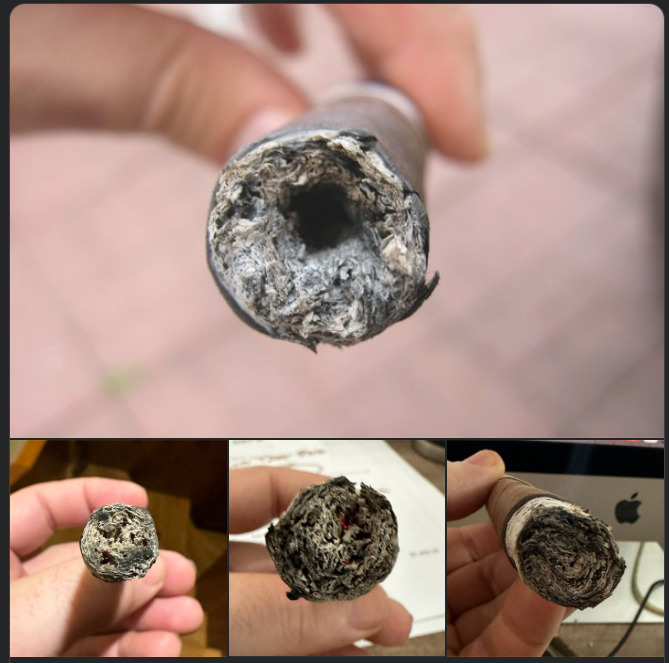Uncategorized
Cigar Tunneling 101 with Steve Saka
Not sure why, but this has become a topic as of late with some consumers.
Many seem to think many, if not all of the cigars they are smoking are tunneling, in fact, I just got off the phone with a Retailer who said he has been getting multiple complaints across a ton of brands lately.
Tunneling is a very serious issue and one we do not take lightly on the manufacturing side.
So I started doing a little research online looking at some of the photos and complaints and for whatever reason many consumers are being fed bad info.
Tunneling dramatically impacts how a cigar burns and in turn, tastes.

The primary causes of tunneling are:
1) Improper bunching technique – that is a fault at the factory from improperly centering the thickest textured leaf in the liga – often the ligero.
2) Storage Conditions – this can be the factory’s fault if we fail to properly wick the cigar prior to boxing, but more often it is the storage conditions either by the Retailer or the Consumer.
3) Improper Cutting – I know all you folks love your fancy v-cutters and punches, but the bottom line is they are SUBPAR to a good clean straight cut that opens up 80+% of the face of the cigar. Anything that modifies the draw airflow increases the risk of burn issues.
4) Improper Lighting.
5) Smoking too Fast – a VERY common cause.
6) Poor Material Selection and Blending by the Ligador (that is me).
7) And sometimes you just get a leaf or rib in the tripa that burns too fast – it happens… no fix to this, it just happens.
BUT here is where the issue becomes a consumer education concern, it is apparent to me now having looked online at groups and some media sites, that many of you are being shown pictures of cigars that the smoker believes is an example of tunneling that is NOT.
Below are 4 pictures for reference:
The 1st Image is a perfect example of what a cigar looks like when it is tunneling – a deep, larger crater – most commonly at the center. Hot charred center with the binder and wrapper burn not keeping up – often impossible to keep lit. This tunneling totally ruins the cigar’s combustion and flavor. No salvaging it.
But the next 3 photos are examples of perfectly fine cigars, burning as you would expect, those small holes on the face of the ash are normal and should be expected.
Typically the stronger the tripa, the more prevalent those small holes will be – but notice in all three sample photos there is no deep crater and the face of the ash remains almost entire flush.
I know this will start endless debates for which I don’t have time to argue with keyboard experts today, but I promised the Retailer I would share this info…
He thinks people might actually listen to me…
He is a fool, but I love him… <snicker>

